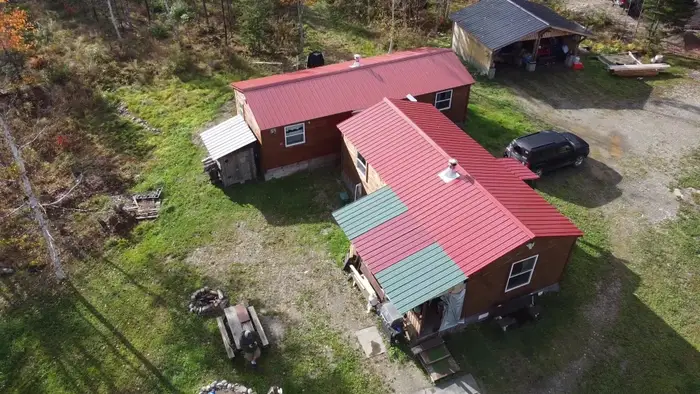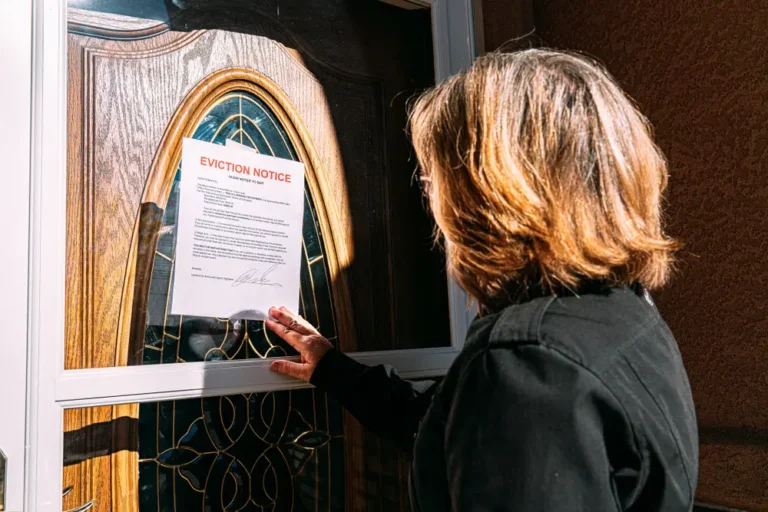We retired to Maine and turned 2 $12,000 Amish sheds’ into our off-the-grid dream home

Jason and Jennifer Remillard connected two Amish sheds with a custom-built hallway to create their off-the-grid house.
My wife Jen and I lived in a small town called Wauconda just outside of Chicago. Jen was a supervisor in the photo lab at Costco, and I was the director of quality and operations for a touchscreen manufacturer.

The Remillards saved for 10 years to make their Maine homestead a reality.
We were the typical American family. We’d sit down on the couch and we’d watch TV. Then we’d go to bed, and wake up. Rinse and repeat every day.
In about 2010, we decided that once all six kids were graduated and out of the house, we wanted to live an off-grid lifestyle and homestead. We spent 10 years preparing for the transition.

The Remillards dreamed of a simple life after living in the suburbs for years.
In January 2019, we found a piece of property in Maine on LandWatch.com. We flew up a week after we saw it, and hiked a mile and a half in knee-deep snow with our real-estate agent to look at it. We fell in love with it.
It’s in the Houlton area of Maine, about three and half hours north of Portland. We’re at the end of an unmaintained road on the Canadian border.
We paid $50,000 for 58 acres.
I loved the privacy of it. We only have a few neighbors within a mile of us.
We dreamed of a debt-free lifestyle off the grid

The back of the Remillards’ home.
In June 2021, we sold our Wauconda home. We packed up our trailer and U-Haul, dropped our son off at the Marine Corps, and drove out here.
When we left Illinois, we wanted everything paid off. The property was $50,000, the vehicles were $40,000, the two Amish cabins were $24,000, and the solar panels were $12,000. Over four years, we put all that money aside so that when we stepped on the property in 2021 we didn’t have to worry about anything.
It allows me to work two and half hours a day on the property and maintain this lifestyle without worrying about heavy debt. It’s about being able to work on your home, work on improving your life, without spending two-thirds of your day at a job that you don’t like.
It was really just a mad dash to figure out what the game plan was. We had no experience with this lifestyle. We made hundreds of to-do lists.
The first thing we had to do was mow the lawn. Then we worked on rebuilding the fence and had a gravel pad — a foundation for our homes — installed. We had to clean out the old shed that was on the property and fix up a temporary storage building.
It was just a lot of busy work. We installed solar panels so that we weren’t running on a generator 24 hours a day. We had to cut enough firewood for the winter.
Being at the end of an unmaintained road, the Border Patrol informed us that our property was used as a “lovers lane,” a place for young people to go and just mess around. So, we put up a fence along the road section of our property, just to let people know that we are actually living here now.
The Amish sheds give us flexibility for a permanent home

The Remillards got the idea to build a home out of Amish sheds from their neighbors.
In 2020, when we had the property but were still living full-time in Illinois, we met one of our Maine neighbors on a trip. They were kind enough to invite us over and they showed us the Amish shed they had for their home. We weren’t really sure what route we wanted for our forever home, but we saw theirs and just thought, “Hey, we could do this, too.”
We reached out to Sturdi-Built Storage Buildings in Smyrna, Maine. We designed our own cabins, everything from where the windows are to where the doors are.
We’re so glad we didn’t go the log cabin route because these buildings are so incredibly versatile. Since we’ve had them, we’ve built a porch on one side. We’re going to add a sun room to another side next year.
My first thought was to put them in an L shape. But then my concern was that the snow here in the winter. If I had my two cabins in an L shape, inside the L there would just be a massive pile of snow when it all slid off the roof.
If I were a professional carpenter, I could connect the two buildings at the roofline and make them look seamless like one building. But I’m not that guy. So, I built a small 5×5 hallway between the two buildings. It was the extent of my abilities, but it works fantastic.
When the cabins were delivered, they were just shells. The floor had insulation, but wasn’t finished, and the walls were just 2x4s. There was no electrical, plumbing, or siding. We went through our first winter with no siding on our walls. We had to do everything. We spent around $10,000 making the two sheds into our home.
All of the hard work that Jen and I have done — I wouldn’t trade that for anything.
If someone wants a big, elaborate place, the Amish shed probably isn’t for you. This is for someone who wants a small footprint for their home. But they’re adaptable to any environment, down south in Texas, out in Appalachia, up in Oregon, the Midwest, and, of course, here in Maine.
We’ve documented this journey on YouTube. It’s to show people out there who aren’t in their 20s that no matter how old you get, you can still follow your dreams.






